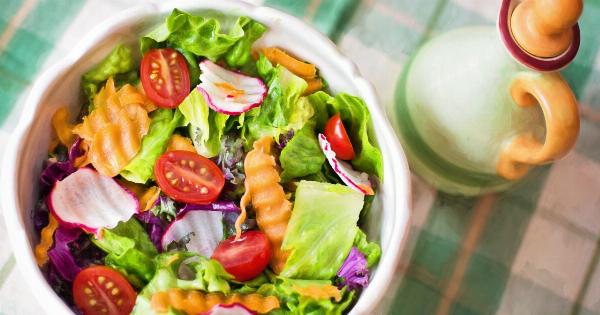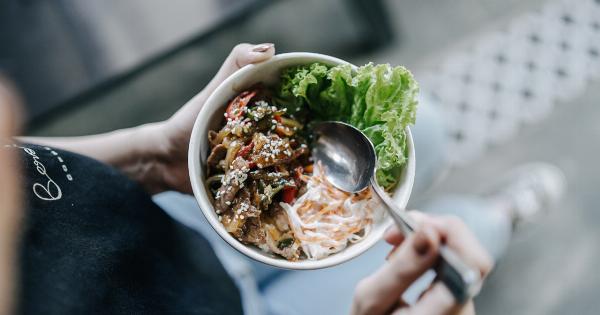Lactose intolerance is a common digestive problem that affects millions of people worldwide. If you have lactose intolerance, it means that your body cannot digest lactose, which is a sugar found in milk and dairy products.
As a result, you may experience a range of unpleasant symptoms when you consume lactose-containing foods, such as bloating, gas, diarrhea, and abdominal pain.
Fortunately, there are plenty of lactose-free and low-lactose foods that you can eat without triggering your symptoms.
In this article, we will take a closer look at what you can eat if you have lactose intolerance, including some tips on how to safely navigate the grocery store and cook lactose-free meals at home.
Foods to Avoid
If you have lactose intolerance, it’s important to avoid or limit your consumption of foods that contain lactose. Some common sources of lactose include:.
Milk and Dairy Products
- Milk
- Cheese
- Yogurt
- Ice cream
- Sour cream
- Buttermilk
Baked Goods
- Bread
- Cookies
- Cakes
- Muffins
- Pastries
Sauces and Dressings
- Ranch dressing
- Caesar dressing
- Cream-based sauces
- Cheese sauce
- Alfredo sauce
Foods to Eat
While it may seem like there are a lot of foods that you need to avoid if you have lactose intolerance, there are still plenty of delicious and nutritious foods that you can eat. Here are some examples:.
Lactose-Free Milk and Dairy Products
If you love dairy products but can’t tolerate lactose, there are plenty of lactose-free alternatives available in most grocery stores.
These products are made by adding lactase enzyme to milk, which breaks down the lactose sugar into simpler, easier-to-digest sugars.
- Lactose-free milk
- Lactose-free cheese
- Lactose-free yogurt
- Lactose-free ice cream
Non-Dairy Milk Alternatives
If you prefer to avoid dairy altogether, there are plenty of non-dairy milk alternatives made from nuts, seeds, and grains. These milks are naturally lactose-free and can be used in place of dairy milk in most recipes.
- Almond milk
- Soy milk
- Coconut milk
- Oat milk
- Rice milk
Fruits and Vegetables
Fruits and vegetables are naturally lactose-free and are a great source of vitamins, minerals, and fiber. Aim to eat a variety of colorful fruits and vegetables each day to ensure that you’re getting a wide range of nutrients.
- Apples
- Bananas
- Oranges
- Strawberries
- Blueberries
- Spinach
- Kale
- Broccoli
- Cauliflower
- Carrots
Grains and Starches
Most grains and starches are naturally lactose-free, making them a great choice for people with lactose intolerance. Be sure to check the ingredient labels of packaged foods to make sure they don’t contain lactose.
- Rice
- Quinoa
- Potatoes
- Sweet potatoes
- Corn
- Oats
- Barley
Protein-rich Foods
Protein-rich foods are an important part of any healthy diet, and there are plenty of options that are naturally lactose-free. Try to include a variety of protein-rich foods in your meals, such as:.
- Meat
- Poultry
- Fish and seafood
- Eggs
- Beans and legumes
- Nuts and seeds
- Tofu
Cooking and Meal Planning Tips
Cooking and meal planning can be a challenge when you have lactose intolerance, but with a little creativity and planning, it’s possible to enjoy delicious, nutritious meals without triggering your symptoms.
Here are some tips to help you get started:.
Read Labels Carefully
When shopping for packaged foods, be sure to read the ingredient labels carefully to make sure they don’t contain lactose or any lactose-containing ingredients, such as milk protein or whey.
Experiment with Lactose-Free Recipes
There are plenty of delicious lactose-free recipes available online that can help you get creative in the kitchen. Experiment with new recipes and ingredients to find meals that you enjoy.
Choose Non-Dairy Substitutes
When cooking and baking, consider using non-dairy substitutes for milk and other dairy products, such as almond milk or coconut milk.
Plan Ahead When Eating Out
When dining out, check the menu ahead of time and ask the server if any dishes contain lactose. Look for menu items that are naturally lactose-free or can be easily modified to remove lactose-containing ingredients, such as cheese or cream.
Consider Supplements
If you have trouble getting enough calcium or other nutrients in your diet due to lactose intolerance, consider taking a calcium supplement or a multivitamin that contains calcium and other essential vitamins and minerals.
Conclusion
Living with lactose intolerance can be challenging, but with a little knowledge and planning, it’s possible to enjoy a healthy, satisfying diet without risking unpleasant symptoms.
Take the time to explore new foods and recipes, and don’t be afraid to ask for help or advice from your healthcare provider or a registered dietitian. With the right support, you can successfully manage your lactose intolerance and enjoy a happy, healthy life.





























